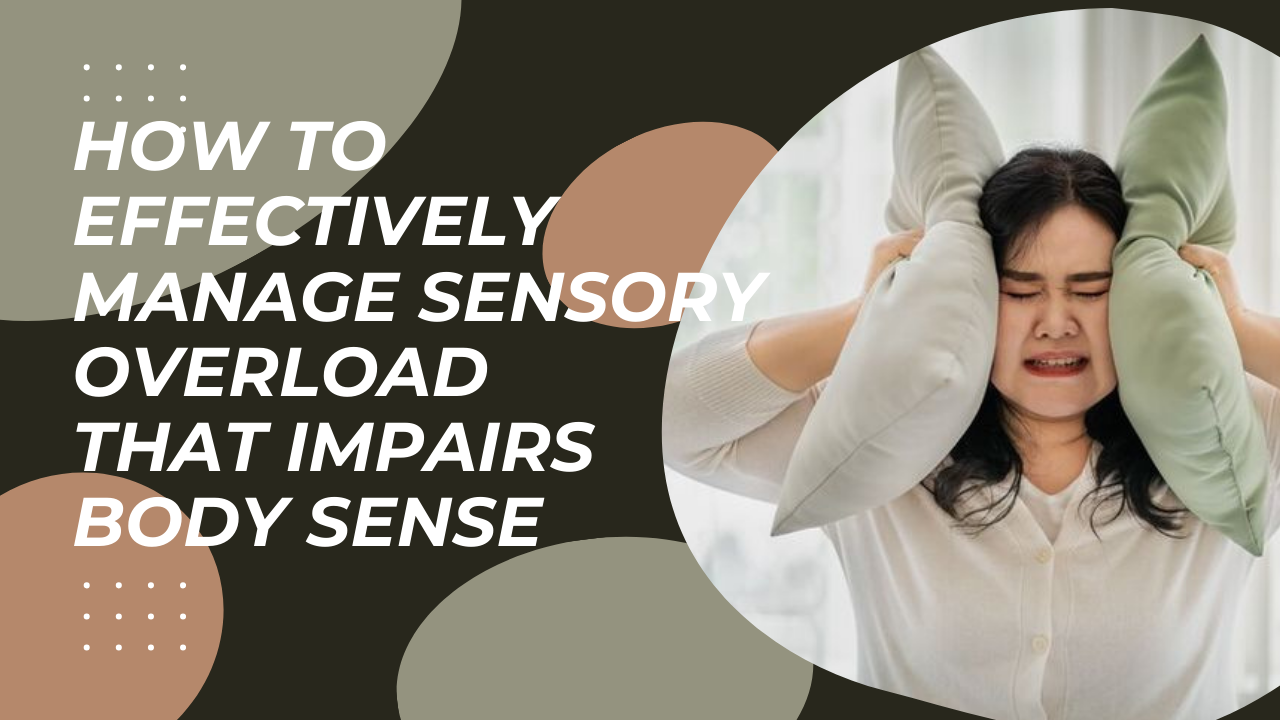When your five senses—light, sound, taste, touch, and smell—take in more information than your brain can comprehend, it's known as sensory overload.
The brain switches into fight, flight, or freeze mode as a result of being overloaded with information and reacts as it would in a life-threatening situation. Your body will become ready for action if you are put into fight-or-flight mode. Your breathing and heart rate will quicken, allowing more oxygen to reach the huge muscles you need to run or fight with.
As blood is diverted, you may have freezing hands and feet. You might start to perspire or turn pale. This unconsciously made choice happens nearly instantly. Just like you would react quickly to avoid being hit by a speeding car before fully processing what is taking place. On the other hand, it indicates that you must use a lot of effort to restrain this reaction.
You won't feel good if sensory overload makes you feel frightened, afraid, panicked, sweaty, pallid, and shaky—the same way you would if a predator assaulted you. It may take up to 30 minutes for these emotions and symptoms to pass. For some people, this process might be accelerated by calming or down-regulating techniques (deep breathing, meditation, hand-on-heart exercises, and similar).
Symptoms
Along with the aforementioned indications of a fight-or-flight reaction, someone with sensory overload may also experience:
- Worry or thoughts of excessive enthusiasm
- Anger, tension, dread, or panic
- Physical discomfort
- Agitation and a lack of relaxation
- A strong want to leave the situation or cover your eyes or ears in order to block part of the input.
Children's meltdowns or tantrums caused by sensory overload may be misconstrued for misbehaviour.
Causes
There are numerous distinct factors or mixtures of factors that might cause sensory overload. They consist of:
- Large groups of people or crowded areas
- Clamorous noises like loud music, fireworks, a large crowd, or a festival
- Strongodours
- Unpleasant touches include those that are harsh, irritating or scratchy, too hot, or too cold on the skin, for instance.
- Unexpected or sudden physical contact
- Abrupt or extreme shifts in sound, light, or temperature
- Persons or situations that is emotionally intense.
Managing Sensory Overstimulation
It's crucial to try and determine what sensory inputs, circumstances, or locations make you experience sensory overload. Making and keeping a list may be beneficial.
Attempting to avoid these triggers is the first step. It's probable that this won't always be possible, like at work. There could be ways to lessen them if you can't prevent them. Thinking creatively and in advance is helpful. You could request that the venue dim the lights or the music in advance. If it happens at work, you can minimise loud or unexpected sounds by going into a quiet room, closing a door, using headphones, or explaining the problem to your coworkers.
Verify that your friends and family are aware of your triggers. When it comes to avoiding triggering circumstances or recognising when you're feeling overwhelmed, they can be a huge assistance. If you have sensory issues, you probably wouldn't want, for instance, a sizable surprise birthday celebration at a crowded location.
If you must attend a large gathering or event, consider speaking with people in a quiet area such as a hallway, café, or another room. Before attending an event, consider when and how to leave so that you have a strategy in place in case you start to feel overwhelmed. To alert a relative, friend, or coworker that you must step outside or depart, you can set up a signal.
Finding safe locations at home and at work where you don't feel triggered or where you can go if you're feeling nervous to feel calm and safe is also a part of understanding your triggers. Routines can be quite beneficial. Routines can help you avoid triggers once you are aware of the locations or circumstances that act as them. You can also benefit from routines by reducing stress and experiencing comfort and meaningful activity.
Using a list might help you focus and stay on task whether running errands or going shopping, reducing random input and preventing overwhelm. Adult sensory toolkits may include fidget spinners, noise-canceling headphones for noisy environments, and sunglasses for bright light, or anything else that can help you focus or relax.
For your brain to function at its best, make sure to get enough sleep, exercise, eat healthfully, and drink plenty of water. Learning mindfulness, meditation, yoga, or other relaxation techniques, such "hands-on-heart" practise, might help you focus better, calm yourself down, and lower the activity of your autonomic nervous system (ANS).
Getting Support
Discussing sensory overload, anxiety, or panic attacks with your doctor or a mental health specialist is crucial if you have any of these symptoms. They can advise you on your alternatives, which may include therapy, alterations to your way of life, methods of self-care, medication (anti-anxiety or anti-depressants), or a mix of these.
Ask your medical practitioner to recommend a specialist if your kid is having trouble processing sensory input.
